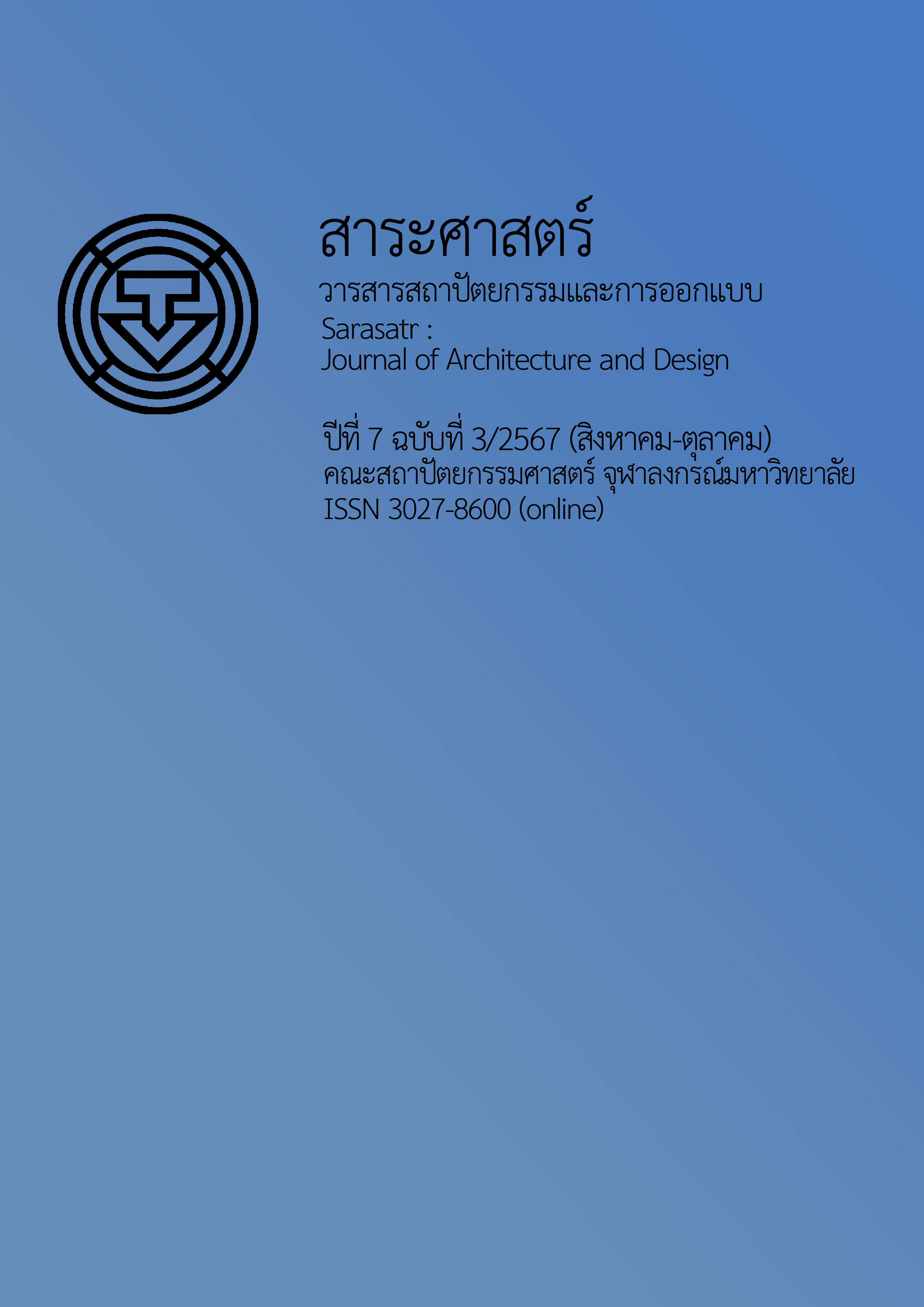Monitoring Application Usage by Juristic Person in Residential Condominium Management
Main Article Content
Abstract
In 2024, the residential condominium real estate business in Bangkok is growing rapidly, leading to increased market competition. As a result, developers are focusing on improving the quality of property management to meet customer demands. The adoption of technology, such as applications, has become a crucial tool for enhancing the efficiency of property management. This article aims to study the concepts of application development, preparation for usage, usage monitoring and results, and the limitations of using applications in property management. The study includes a review of relevant literature, project document studies, interviews with application developers and project managers, and non-participant observations. The case study projects include The Address Siam-Ratchathewi, managed by Smart Service and Management Co., Ltd.; The Line Chatuchak-Mochit, managed by Plus Property Co., Ltd.; and Knightsbridge Kaset Society, managed by Primo Service Solution Co., Ltd.
The study found that the main factor driving the adoption of applications in property management is the change in living behavior of residents during the COVID-19 pandemic. Using applications can reduce paper resource costs, save time in operations, and improve the quality of information in various tasks. However, some limitations were identified, such as difficulties arising from inappropriate user interface design and features, lack of data integration, which can complicate operations, waste time, and prevent full utilization of the application’s potential.
The study's recommendations include that application developers should focus on designing user interfaces and features that are easy to use and meet operational needs while ensuring seamless data integration. Administrators should provide adequate training to prepare staff, evaluate the overall investment value in application development, and encourage further research on application usage in other dimensions to maximize the effectiveness of application implementation.
Article Details
References
กฎกระทรวงฉบับที่ 33 พ.ศ. 2535 ออกตามความในพระราชบัญญัติควบคุมอาคาร พ.ศ. 2522. (2535, 17 กุมภาพันธ์). ราชกิจจานุเบกษา. เล่ม 109 ตอนที่ 11 หน้า 6-23.
ชินวัจน์ แสงอารยะกุล. (2562). การพัฒนาแอพพลิเคชันสื่อการเรียนรู้บนอุปกรณ์เคลื่อนที่ เรื่อง ภาษาอังกฤษสำหรับนักสารสนเทศ [วิทยานิพนธ์ปริญญามหาบัณฑิต ไม่ได้ตีพิมพ์]. มหาวิทยาลัยราชภัฏยะลา.
ธนาคารแห่งประเทศไทย. (2564). รายงานแนวโน้มธุรกิจ ฉบับที่ 4/2564 : แนวโน้มธุรกิจที่อยู่อาศัย. ธนาคาร.
บัณฑิต จุลาสัย และเสริชย์ โชติพานิช. (2547). การบริหารทรัพยากรกายภาพ. โรงพิมพ์แห่งจุฬาลงกรณ์มหาวิทยาลัย.
วรางคณา กรสิริภัคกุล. (2564). ปัจจัยที่มีผลต่อความพึงพอใจในการบริหารจัดการของบริษัทพร๊อพเพอรตี้เมเนจเม้นท์ ในโครงการอาคารชุดที่อยู่อาศัยในเขตกรุงเทพมหานครและปริมณฑล [วิทยานิพนธ์ปริญญามหาบัณฑิต ไม่ได้ตีพิมพ์]. มหาวิทยาลัยศรีนครินทรวิโรฒ.
วัลยา พัฒนพีระเดช. (2562). เอกสารประกอบการสอนวิชา 2501605 สถาปัตยกรรมเบื้องต้น [เอกสารที่ไม่ได้ตีพิมพ์]. ภาควิชาสถาปัตยกรรมศาสตร์ คณะสถาปัตยกรรมศาสตร์, จุฬาลงกรณ์มหาวิทยาลัย.
วุทธิชัย ลิ้มอรุโณทัย และธีระวัฒน์ จันทึก. (2559). การนำระบบสารสนเทศมาใช้เพื่อเพิ่มคุณภาพการบริการของที่พักอาศัย : คอนโดมิเนียม. วารสารสาขามนุษยศาสตร์ สังคมศาสตร์ และศิลปะ, 9(2), 845-861.
ศรีสมรัก อินทุจันทร์ยง. (2549). การนำระบบสารสนเทศมาใช้ในองค์กร. สำนักวิทยบริการ มหาวิทยาลัยมหาสารคาม.
ศูนย์วิจัยเศรษฐกิจและธุรกิจ. (2565). เจาะผลสำรวจการซื้อที่อยู่อาศัยปี 2565…บ้านแบบไหนตรงใจผู้บริโภค [บทวิเคราะห์]. ธนาคารไทยพาณิชย์.
เสริชย์ โชติพานิช. (2543). การบริหารจัดการอาคารชุดพักอาศัย : ผู้จัดการนิติบุคคลอาคารชุด. วารสารวิชาการคณะสถาปัตยกรรมศาสตร์ จุฬาลงกรณ์มหาวิทยาลัย, (2), 99-106.
เสริชย์ โชติพานิช. (2549). แนวคิดการบริหารทรัพยากรกายภาพสำหรับโครงการที่อยู่อาศัยแบบรวม. วารสารวิชาการคณะสถาปัตยกรรมศาสตร์ จุฬาลงกรณ์มหาวิทยาลัย, (2), 103-118.
เสริชย์ โชติพานิช. (2553). การบริหารทรัพยากรกายภาพ : หลักการและทฤษฎี. โรงพิมพ์จุฬาลงกรณ์มหาวิทยาลัย.
โสภณ พรโชคชัย. (2556). การบริหารธุรกิจอสังหาริมทรัพย์ไทย. ส.วีรัชการพิมพ์.
Alghamdi, A., & Kaviani, H. (2020). A review of UX and usability research in GCC countries. Journal of Usability Studies, 16(1), 61-88.
Alkhammash, E. H. (2020). Developing a mobile application for smart real estate information. International Journal of Management (IJM), 11(12), 3136-3148.
Davis, F. D. (1989). Perceived usefulness, perceived ease of use, and user acceptance of information technology. MIS Quarterly, 13(3), 319-340.
Patil, A., Jadhav, V., Kale, V., & Kale, A. (2023) Property management system. International Journal of Advance Research, Ideas, and Innovations in Technology, 9(2), 1169-1172)


